Iran has unveiled the latest in its line of underground bases, with a cavernous facility now apparently being used to protect fighter jets. From the imagery released so far, the aircraft currently in these caverns are veteran F-4D/E Phantom IIs that continue to make up a significant portion of its air power. With around 60 examples still in service, the F-4 is the most numerous IRIAF combat jet, by some margin.
If this installation becomes a regular component of operations by the Islamic Republic of Iran Air Force, or IRIAF, it should provide a useful additional layer of protection against some forms of aerial attack. In doing this, Iran will follow the lead established by several other countries, including China, North Korea, Switzerland, and Taiwan. The disclosure also comes hot on the heels of the biggest joint U.S.-Israeli military exercise in history, which took place in January and that you can read more about here.
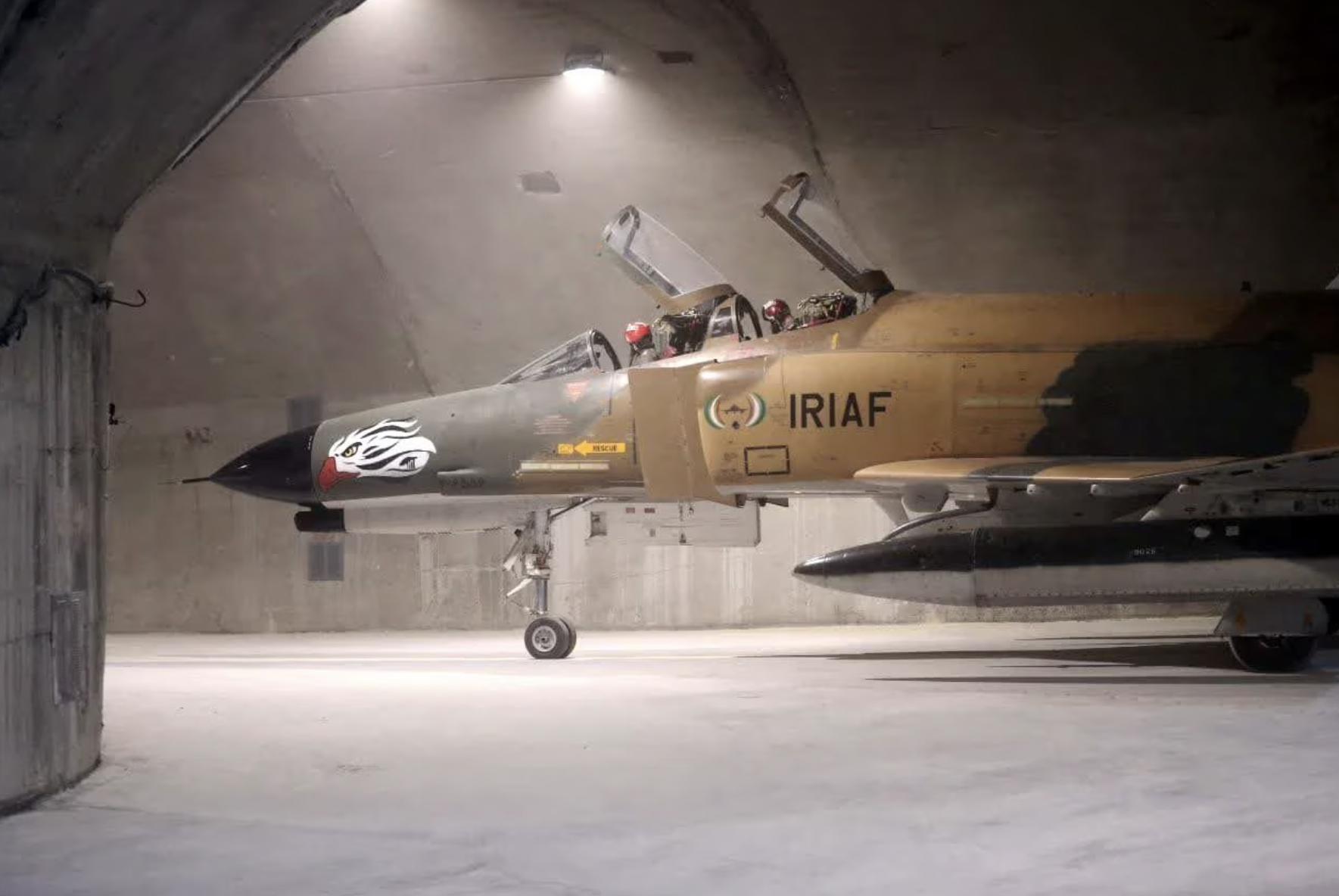
A series of photos and videos released today by Iran shows what it describes as a new underground airbase, named Eagle 44, during a visit by Iran’s Army chief, Major General Abdolrahim Mousavi, and Iranian Armed Forces Chief of Staff, Major General Mohammad Bagheri. It’s not immediately clear if this is really an all-new facility that’s been dug out of a mountain range or if it is an adaptation of one of the various underground bases we’ve seen in the past, used for storing and protecting missiles and drones, for example.
Whether an entirely new project or not, work on the underlying facility would have to have been started some time ago, considering how long it takes to build these kinds of facilities. What’s obvious, though, is that it’s large enough to accommodate fighter jets, with photos showing several fully armed F-4s within the base.
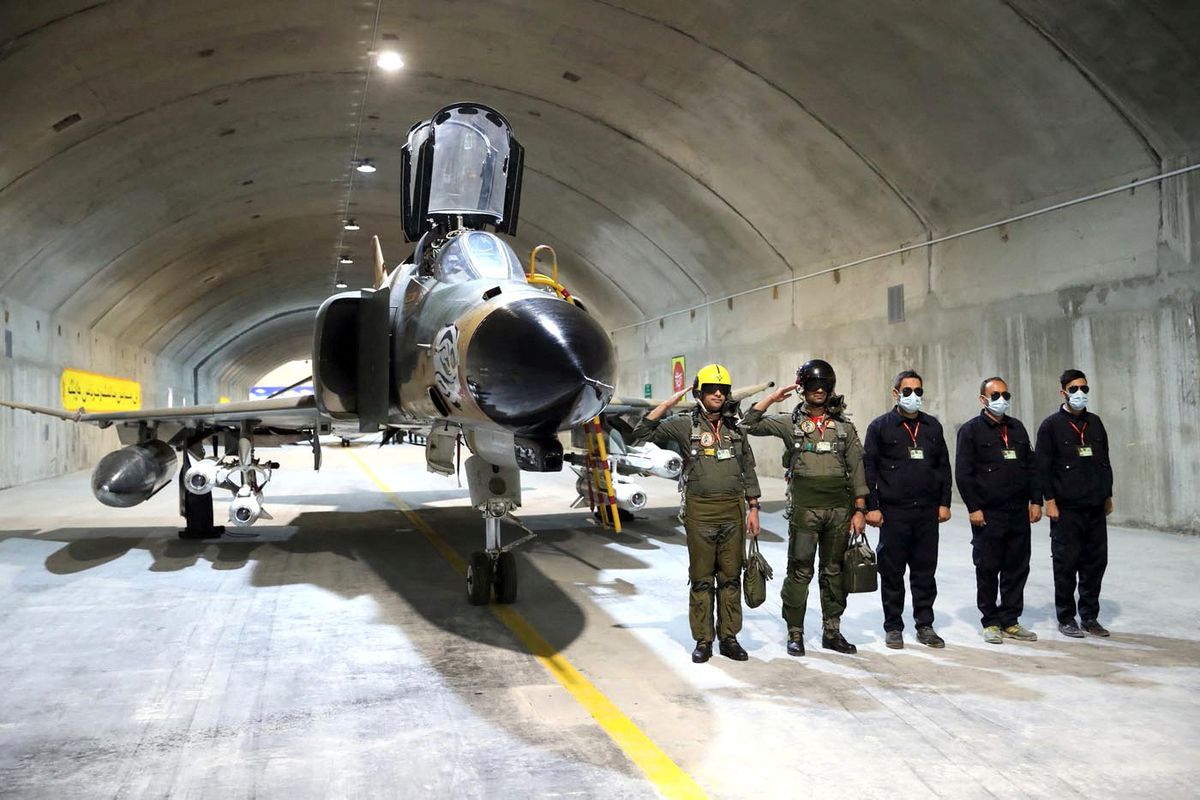
According to the country’s official Islamic Republic News Agency, or IRNA, Eagle 44 is one of the country’s most important airbases and houses fighters equipped with long-range cruise missiles. The available photos show F-4s carrying U.S.-made AGM-65 Maverick air-to-ground missiles, laser and electro-optically guided bombs, and unguided ‘dumb’ ones, as well as domestically produced anti-ship missiles.
“Any attack on Iran from our enemies, including Israel, will see a response from our many air force bases including Eagle 44,” Major General Bagheri told state TV, according to a report from Reuters.
As to the importance of the base, that’s somewhat unclear since its location has not been revealed. Prior to now, the IRIAF’s roughly 60 surviving F-4s have been deployed at four airbases in Bandar Abbas, Bushehr, Chahbahar/Konarak, and Hamadan/Nojeh. It’s worth noting that from this total of Phantoms, only around 60 percent are actually judged to be serviceable at any time.
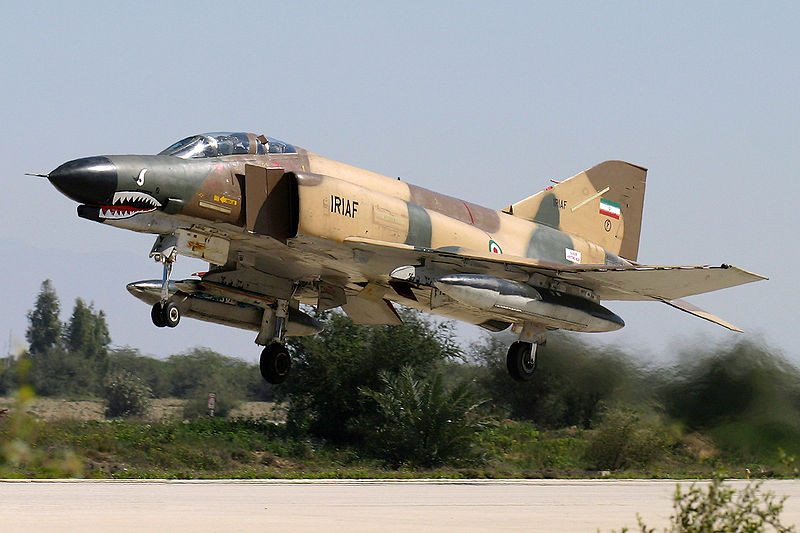
Moreover, it’s not clear if the underground Eagle 44 facility has been integrated into one of the existing bases or if it exists as a standalone unit, perhaps housing rotational detachments of F-4s and other combat jets.
The IRNA does claim, however, that the underground airbase is capable of operating jets and drones, and not simply storing them out of harm’s way. If true, Eagle 44 has to be connected to a runway, as well as reserves of fuel and munitions, maintenance and repair facilities, crew quarters, and security and force protection assets. Facilities to handle air traffic control and other command and control functions would be necessary, too.
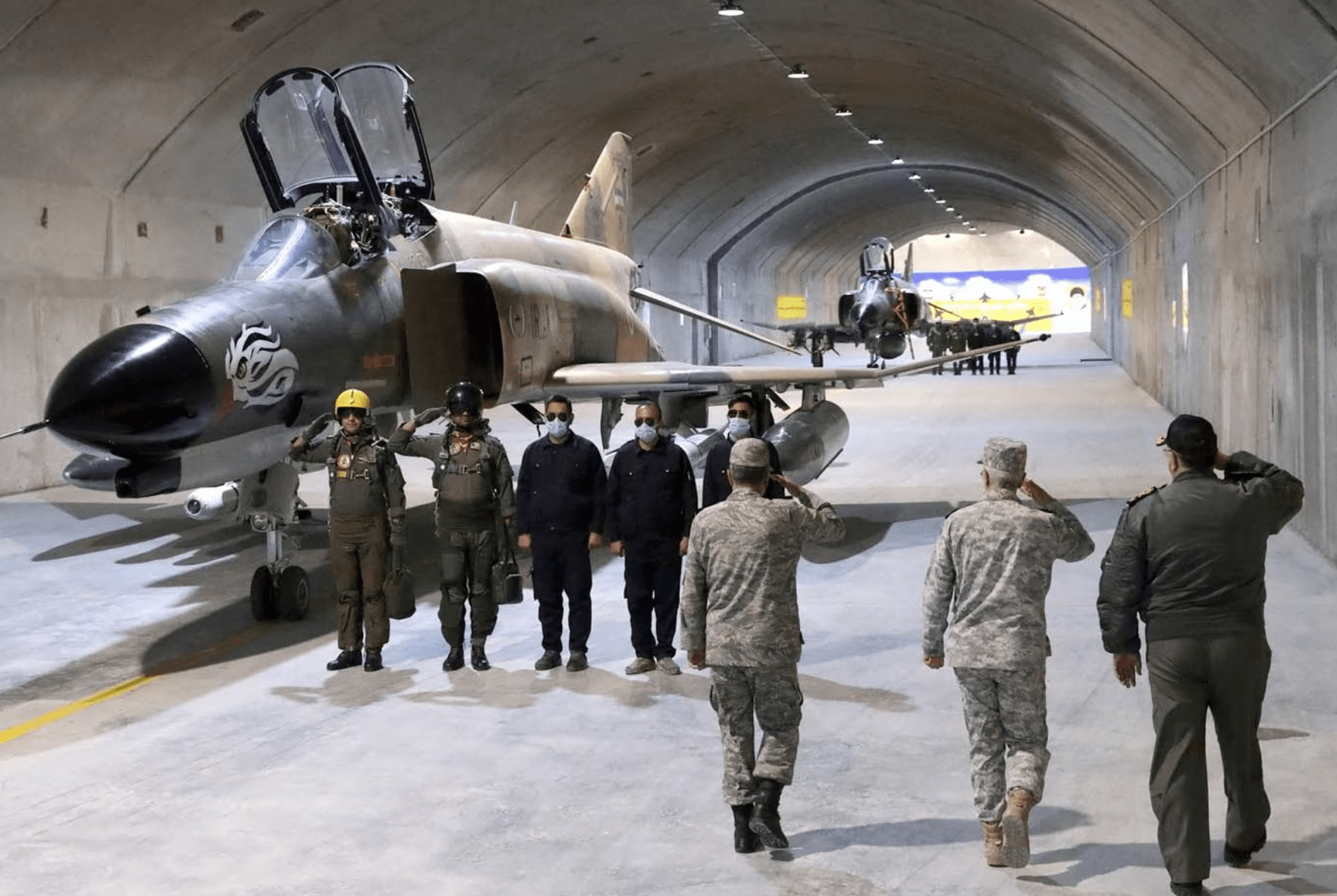
We have seen on multiple occasions in the past that Iran is keen on burying key elements of its military capabilities deep below the ground, protecting them from potential attacks by its enemies.
This effort really took off around 2015, when videos and photos were released showing its elaborate and impressively large missile caverns. These are intended not only to store and assemble some of the many ballistic missiles in the Iranian inventory, but also to launch them from their subterranean vaults via deep cylindrical concrete apertures cut into the roofs.
More recently, Iranian authorities claimed to have introduced an automated railway-type system to at least one of those underground missile bases, with vertically-stowed missile ‘magazines’ that are intended to bring groups of missiles into position for rapid, consecutive launching. You can read more about that concept here.

These facilities appear to have demanded some innovative engineering solutions, including blast doors and drawbridge mechanisms that protect different parts of the cave network. This is especially important if the enemy does strike part of it, or otherwise if there’s some kind of accidental fire or explosion. Similar measures would have to be incorporated in the Eagle 44 base if it’s to have a genuine wartime role. We do see at least one internal blast door in the video, as well as branches from the main tunnel to revetment areas to park fighters and drones.
After all, a cave complex like Eagle 44 would still become a key target for any large-scale offensive launched by one of Iran’s enemies. While storing and maintaining aircraft under a mountain greatly improves their chance of surviving a standoff cruise missile attack, drone attack, or even a conventional ballistic missile attack, a facility like this would also be added to a targeting list for weapons specifically designed to penetrate deeply buried bunkers. Non-nuclear weapons of this kind in the U.S. inventory include the enormous GBU-57 Massive Ordnance Penetrator (MOP) guided munition, but these are limited in number and can currently only be delivered by the U.S. Air Force’s B-2A Spirit stealth bombers. In fact, Iranian media itself references the MOP in the video. The bombs were built specifically for these types of targets and continue to be upgraded to dig deeper.
While less effective in terms of penetrating power, the United States and Israel also have a range of smaller bunker busters that could, at the least, cause disruption, of an underground complex like this one. Just striking the entrances and putting them out of action may not destroy what is inside, but it would effectively neuter any capabilities there for a period of time. In this case, the cavern ‘passes through’ and has at least two access points on each end. Cratering the runway and taxiways connected to the tunnels would be another way to put the traditional fighter airpower stored there out of action, even if for just a limited amount of time.
This reality is not lost on Tehran, of course, and it’s possible that operational doctrine would plan for Eagle 44 to launch at least some of its aircraft before the facility itself came under sustained attack. Any jets launched would probably be headed on one-way missions, or at least would have to recover wherever they could find a surviving runway. Still, for this kind of scenario, the protection afforded by an underground support base could be important to retaining air combat capabilities, depending on what the foe’s capabilities are, of course.
Still, the IRIAF’s F-4s and other old fighters would have little impact on a potent foe like the Israeli Air Force or the U.S. Air Force. In that regard, keeping these aircraft stowed in protective caverns during a time of conflict may be the strategy Iran is looking to actually execute. We just don’t know. What we do know is that these facilities are very expensive to create, so there is a concept of operations behind their utility.
As well as its underground missile bases, Iran has also shifted much of its missile production capabilities to ‘underground cities,’ providing a kind of ‘end-to-end’ survivable ballistic missile infrastructure. While that in itself provides a valuable deterrent, the same kind of thing would be much harder to achieve with fighter jets, which need to be taken out of their underground caverns for regular flying, as well as undergoing periodic overhauls of different complexity, which would almost certainly have to be conducted at conventional airbases.
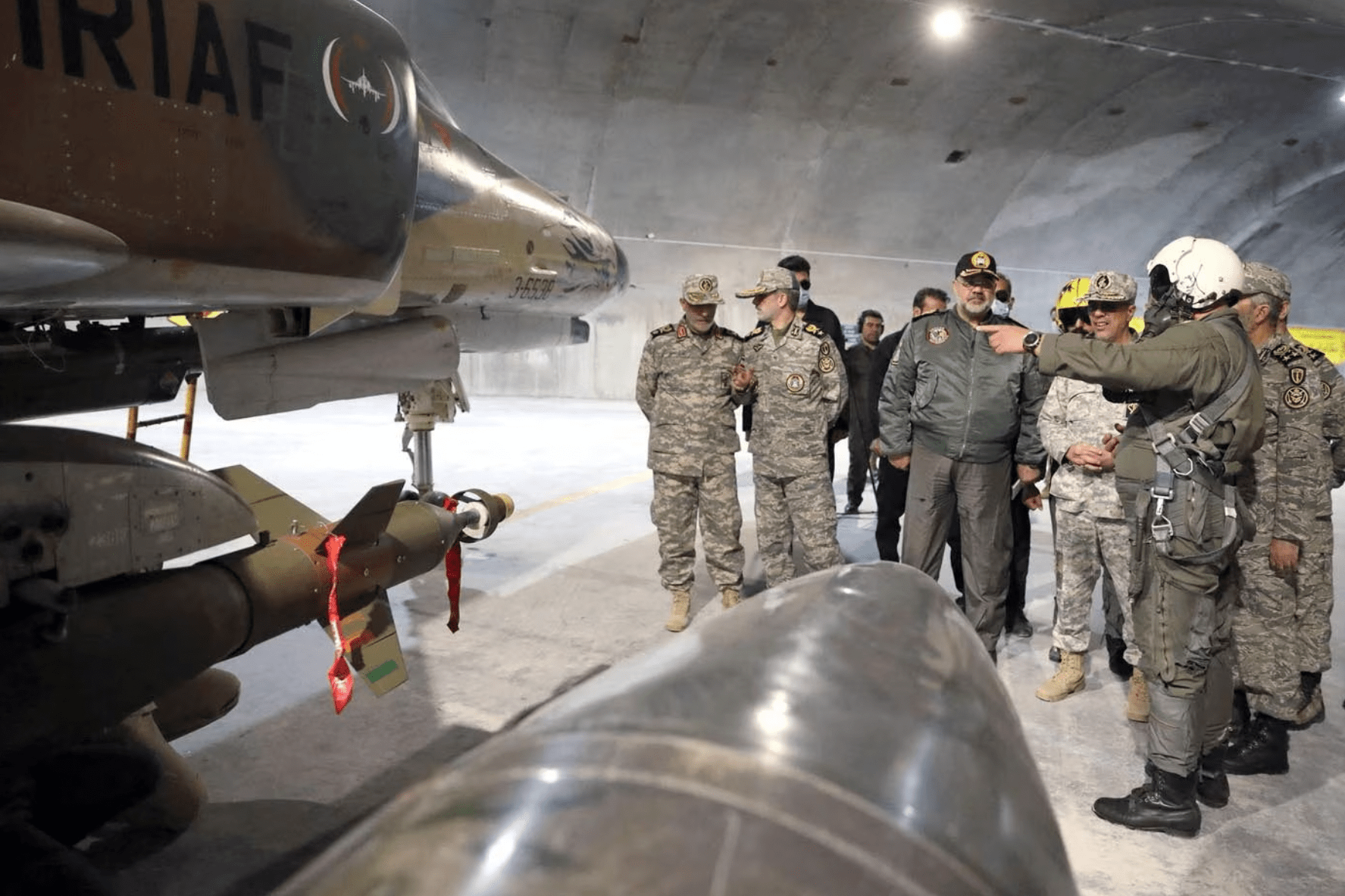
Following its underground missile efforts, Iran has also showcased underground bases designed to house very large groups of drones, another weapon that the country’s defense industry has been producing at a prodigious rate in numerous different versions.
In May last year, Major General Mousavi revealed details of an underground base said to be capable of accommodating 100 drones, including examples of the Ababil-5 armed with Qaem-9 missiles.

Bearing in mind its previous huge investments in underground military infrastructure, it’s no surprise that fighter jets are now part of this doctrine, at least to some degree. Should the expected deliveries of Russian-made Su-35 Flanker multirole fighters happen, then there could be an even more compelling case to provide a high level of protection to jets that would represent a significant leap in capabilities for the IRIAF.

It’s notable that the Iranian regime has disclosed the existence of at least one underground airbase facility so soon after the joint U.S. Central Command (CENTCOM) and Israel Defense Forces Juniper Oak exercise, the largest of its kind ever, which in turn comes during a time of greater U.S.-Israeli military cooperation. In the background, too, is the specter of the stalled nuclear talks, with U.S. officials so far having failed to restart negotiations since the 2018 collapse of the Iran nuclear deal.
While questions remain about the long-term operational viability of the Eagle 44 base, especially during an actual conflict, the fact is its very existence makes targeting the Iranian military’s capabilities a little bit harder. Burying fighter jets within a mountain range doesn’t render them entirely invulnerable, but it makes them a lot harder to totally neutralize, creating a tactical problem for any potential adversary to deal with, especially Israel, which, unlike the United States, does not have a MOP.
It will certainly be interesting to see more of this underground airbase facility and how this concept might be further deployed at other locales.
Contact the author: thomas@thedrive.com
